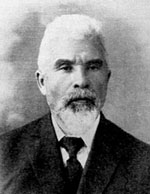 |
| The university’s building - the 1920s |
Varna University of Economics was established as Bulgaria’s first Higher School of Commerce following the industrial and cultural boom at the turn of the 20th century and the ever growing need for business training. Varna was enjoying huge economic development and had already gained full recognition as a major commercial hub.
|
|
|
The university’s building - the 1920s
|
In 1911 Varna Chamber of Commerce and Industry management started planning the establishment of the Higher School of Commerce, whose launch was voted on 14 May 1920 at the Chamber’s 25th session. This date is considered the onset of Bulgaria’s higher economic education. Sofia University, this country’s first university, had already been founded but did not offer any business education.
The management of the Higher School was entrusted to a Supreme School Council. In the autumn of 1921 classes were inaugurated with the blessing of Simeon, the Bishop of Varna, and the ceremony was attended by King Boris, members of Varna Chamber of Commerce and Industry, public officers and the general public.
 |
| Prof. Tsani Kalyandzhiev |
The first Rector of the Higher School of Commerce was Prof. Tsani Kaliandzhiev, the School’s founder. He was born in Liaskovets in 1866 and went to school in Varna. He studied technical chemistry in Moscow’s Imperial School and graduated from the University of Zurich. He lived in the USA for five years working there as a chemist in a chemical factory. He returned to Bulgaria in 1896 to teach chemistry at Svishtov School of Commerce. He was a chemist at the Ministry of Commerce and the Public Health Care Department. He also taught at the private school of commerce in Sofia. In 1904 Varna Chamber of Commerce and Industry invited Tsani Kaliandzhiev to help establish a local higher school of commerce.
In 1914 Tsani Kaliandzhiev pursued the opening of a higher school of commerce and the construction of its building. He was commissioned by the Chamber of Commerce to research European academic traditions and recruit faculty members. On May 14, 1920 the long-time planned and expected Higher School of Commerce was opened in Varna. Tsani Kaliandzhiev was appointed Rector and he was granted the position of adjunct professor. Upon completion of his thesis, Tsani Kaliandzhiev was appointed professor of commodity science. He was Rector of the Higher School of Commerce until 1933. Though most of his work was devoted to chemistry, commodity science, economic development and commerce, he also carried out research on general and professional education. Prior to his death on 28 March 1944, he bequeathed funds to the Higher School of Commerce to pursue his dream of establishing think tanks on economic research.
The first lecturers at the Higher School of Commerce were creative individuals who bridged the gap between the European cultural environment and the fledgling Bulgarian economic academia. They hailed from Russia, Paris, Budapest; they had degrees from Berlin, Leipzig, Munich, Vienna, Padua, Geneva and Prague. Some of the first were Russian professors Feodor Belmer, professor of accountancy; Naum Dolinsky, professor of political economy and theory of statistics; Oscar Anderson, professor of statistics, economic geography and financial science. Many made a contribution to establishing this university’s excellent reputation: Yanaki Arnaudov, professor of German and Slavonic studies and philosophy; Ivan Konstantinov, professor of French literature; the poet Nicolay Liliev, who taught French; Stancho Cholakov, professor of finance, who later held high-ranking government positions as Minister of Education, Minister of Finance, Governor of the Bulgarian National Bank; Boicho Boichev, professor of accountancy; Professor George Svrakov, Professor Ivan-Assen Rankov; Ivan Ekimov, associate professor of business correspondence and many others.
|
|
|
The Higher School of Commerce’s first Academic Council, 1924. From left to right:
Ivan Ekimov, Todor Karakashev, Tsani Kaliandzhiev, Feodor Belmer, Ivan Stoyanov,
Dimitar Dimitrov, Shalem, Naum Dolinski, Svetoslav Grekov, Yanaki Arnaudov,
Dr. Petkov, Ivan Konstantinov.
|
The first regulations and the first curricula of the Higher School of Commerce followed the ground-breaking example set by Berlin Higher School of Commerce, considered the most modern European school at the time. Regulations stipulated that the school objective was to train teachers for secondary schools of commerce and offer post-graduate studies to accounting auditors. Until 1936 the university trained economists to work as accountants, and financial and trade specialists. Then two majors were established – private and national economics – and they existed until 1949.
Following the tradition of most European schools of economics, the Higher School of Commerce offered two years of training until 1925, from 1925 to 1937 it provided three years of education, and after 1937 students enjoyed four years of training.
Over the years the Alma Mater of Varna has changed its name a number of times. Until 1938 it was called Higher School of Commerce, often referred to as the Academy of Commerce. From 1938 to 1945 it was Higher School of Economic and Social Sciences; from 1945 to 1953 it was called St. Cyril of Bulgaria State University of Varna. From 1953 to 1963 it was called Higher Institute of National Economy. From 1963 to 1990 this Institute was named after Dimitar Blagoev. In 1990 the business school was renamed Varna University of Economics, following a decision of its Academic Council, confirmed by National Parliament decision in 1995.
Exhibition
100th anniversary of construction
the University of Economics - Varna's building